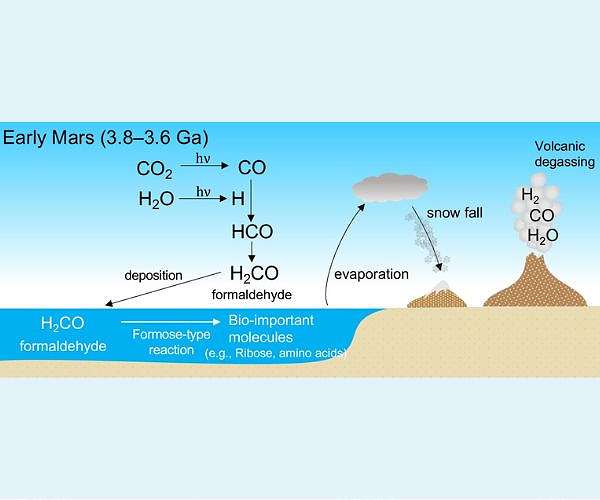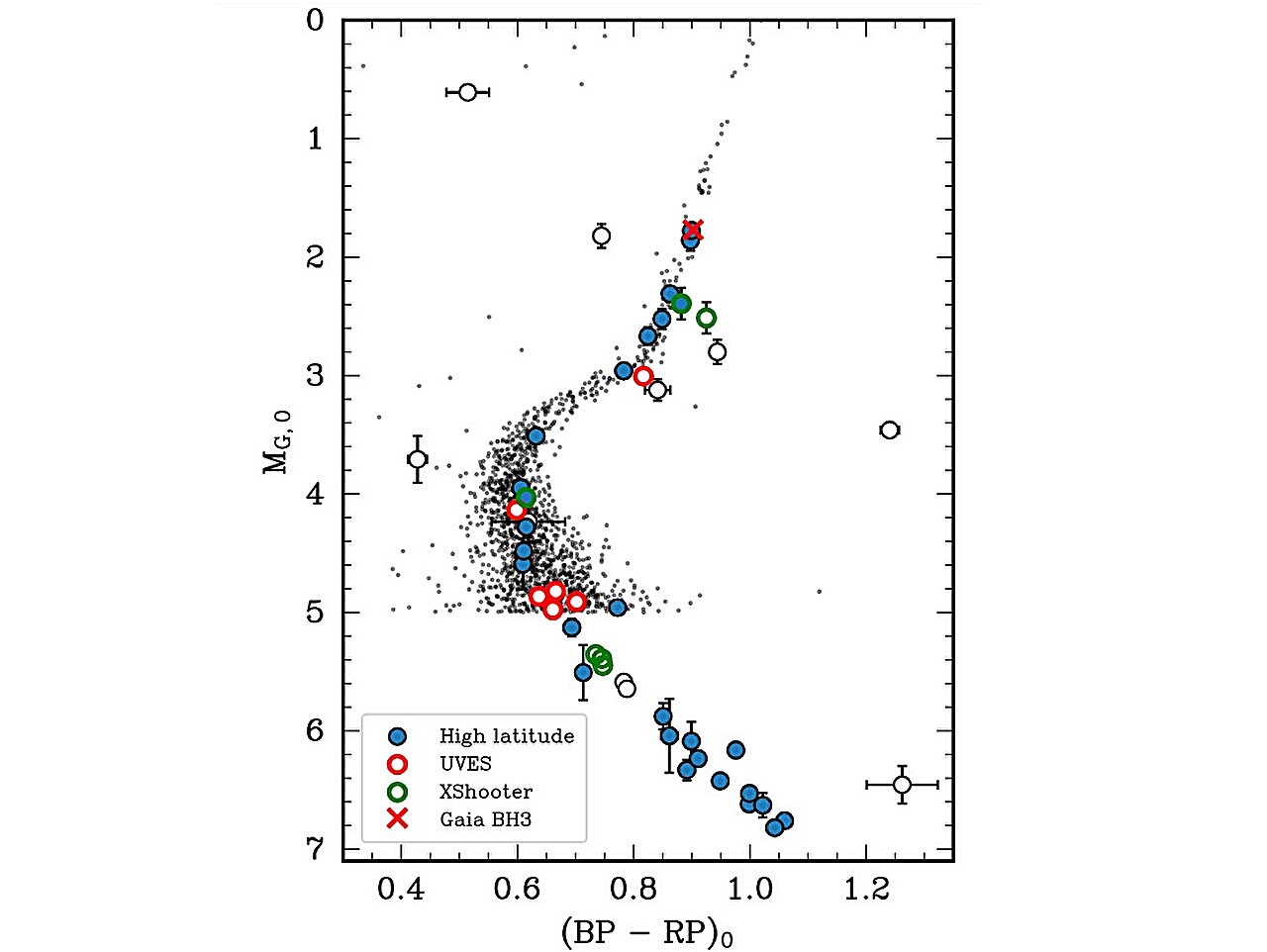Study reveals potential for life’s building blocks from Mars’ ancient atmosphere
by Riko Seibo
Sendai, Japan (SPX) Feb 29, 2024
In a groundbreaking study that could redefine our understanding of life’s potential on ancient Mars, scientists from Tohoku University have unveiled research indicating that organic materials discovered on the Red Planet may have originated from atmospheric formaldehyde. This discovery, published in Scientific Reports, suggests a plausible pathway for the formation of biomolecules-organic compounds crucial for life-on Mars billions of years ago.
The research team embarked on an ambitious quest to explore the early atmospheric conditions of Mars, particularly focusing on the planet’s capacity to foster the synthesis of biomolecules. Their findings illuminate the possibility that Mars, known today for its inhospitable dryness and extreme cold, might once have harbored the necessary conditions for life.
Geological evidence supports a vision of ancient Mars vastly different from its current state. Approximately 3.8 to 3.6 billion years ago, the planet likely enjoyed a temperate climate, sustained by greenhouse gases such as hydrogen. This period is crucial as it suggests the presence of liquid water-a fundamental requirement for life as we understand it.
The core of the team’s research centered on the potential formation of formaldehyde in the early Martian atmosphere. Formaldehyde, a simple organic compound, is instrumental as a precursor for the formation of essential biomolecules, including amino acids and sugars. These components are the building blocks for proteins and RNA, which are critical for life’s processes.
Leveraging an advanced computer model, the scientists simulated the atmospheric composition of early Mars, hypothesizing an environment rich in carbon dioxide, hydrogen, and carbon monoxide. Their simulations revealed that under such conditions, the ancient Martian atmosphere could have continuously produced formaldehyde. This process, in turn, may have led to the creation of various organic compounds, shedding light on the origin of organic materials detected on Mars’ surface today.
“Our research provides crucial insights into the chemical processes that may have occurred on ancient Mars, offering valuable clues to the possibility of past life on the planet,” stated Shungo Koyama, the study’s lead author. By demonstrating the favorable conditions for biomolecule formation, the study significantly enhances our understanding of Mars’ ancient capacity to sustain life.
The implications of these findings are profound, suggesting that the organic materials identified by Mars rovers could be traced back to atmospheric sources, particularly during the planet’s earliest geological periods. This hypothesis represents a paradigm shift in our approach to Martian organic chemistry and the planet’s potential for life.
Looking forward, the research team aims to deepen their investigation by analyzing geological data collected by NASA’s Martian rovers. Their objective is to compare the carbon isotopes of ancient formaldehyde with Martian samples, aiming to unravel the complex processes that influenced the planet’s organic chemistry.
Research Report:Atmospheric formaldehyde production on early Mars leading to a potential formation of bio-important molecules
Related Links
Tohoku University
Mars News and Information at MarsDaily.com
Lunar Dreams and more




